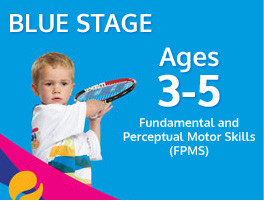By KRISTINA DELL
![[nadal0908]](https://si.wsj.net/public/resources/images/OB-JX128_nadal0_G_20100908221147.jpg) Getty Images
Getty Images
Rafael Nadal is shown during his third round U.S. Open match on Sunday.
As a gangly 8-year-old, Rafael Nadal picked up a new racket at the suggestion of Uncle Toni, his coach, and began to swat around a ball. Toni liked what he saw. The Babolat Soft Drive was exactly what he had been searching for: light and easy to maneuver with a tiny grip.
It was originally designed for a woman, which was fine by Toni, because he wanted a racket his young nephew would be able to control easily. A former table-tennis champion turned tennis pro, Toni Nadal liked the feeling of waving his ping-pong paddle back and forth quickly through the air like a magic wand.

This year’s Spanish Armada at the U.S. Open had everyone talking about the level of talent the country brought to the tournament. But all the talk about Spanish players wasn’t just about their game. WSJ’s Beckey Bright reports.
Why, he wondered, couldn’t a tennis player replicate this motion on the court? “It seemed to me that this [new] racket was easier to whip around,” said Toni. “For that same reason I like a small grip.”
As Mr. Nadal continues to cruise through the U.S. Open field this year—he plays countryman Fernando Verdasco in the quarterfinals on Thursday—the impact of his uncle’s small epiphany on professional tennis is hard to underestimate. In fact, it has helped to fundamentally change the way many top pros approach rackets.
When he started using the whippier racket, the young Rafa, who is naturally right-handed, was using two hands on both sides. It wasn’t until he was 10 that he started playing about 20 minutes at a time with a one-handed forehand. “I thought he should be left-handed because he was using his legs like a left-hander,” Toni said. “We started hitting serves with his left arm and then with his other arm and the reality is he wasn’t very good with either,” he added, laughing. “We had to choose and we chose left.”
When he played his first tournament—also at 10—the light racket and small grip helped Rafa make the transition to a one-handed forehand on his nondominant side. But the flimsy frame made it harder for him to get speed on his serve.
Fourteen years later, Mr. Nadal plays with a different Babolat racket—the top-selling black and yellow Aeropro Drive—but the specifications he uses haven’t changed much.
As the topspin-heavy, clay-court style of play that Mr. Nadal has perfected takes over tennis, there has been a shift in how many of the top pros approach rackets. Players like Mr. Nadal and fellow Spaniard Carlos Moya, who stay glued to the baseline with big forehands and double-fisted backhands, have abandoned the heavy, thick-gripped weapons of the past that players such as Pete Sampras and John McEnroe favored.
U.S. Open Photos: Day 10
EPA
Novak Djokovic of Serbia serves to Gael Monfils of France during their quarterfinal round match.
Today, thin is in. Skinny grips and lighter frames that carry more weight in the head rather than the shaft help baseliners generate more racket-head speed so they can use their wrists and forearms to roll through their shots. Updated polyester strings only add to the effect, as players finish their swings with their rackets up around their ears to get crazy amounts of spin.
“If you give Nadal a heavy racket with a big grip, it’s impossible to do what he does,” said Roman Prokes, part of the team of U.S. Open stringers handling Mr. Nadal’s sticks.
The world No. 1 is also not a racket diva. Mr. Nadal doesn’t travel with a personal stringer unlike many other top tour players. Nor does he take his frustrations out on his equipment. The only time Toni Nadal saw his nephew break a racket is when he was playing at Roland Garros—he hit his shoe on a serve and cracked the frame. The serve was good.
Aside from treating his rackets kindly, what Mr. Nadal does is put a lot of action on the ball. A maneuverable frame lets him execute his signature lefty forehand: instead of following through over his right shoulder, Mr. Nadal snaps his racket back after hitting the ball. (Kind of like a ping-pong player.) The result is a hyper-rotating spin with the ball jumping high off the court.
Rafa’s racket weighs a flimsy 10.6 ounces unstrung, plus an extra 0.4 ounce he adds to the head, for a total of 11.5 ounces with strings, practically pixie dust in the hands of a 6-foot-1 hulking guy. By contrast, the 5-foot-10, 128-pound Caroline Wozniacki, the U.S. Open’s top seeded woman, plays with the same Babolat Aeropro Drive as Mr. Nadal; her frame is just two ounces lighter than Mr. Nadal’s.
If Mr. Nadal picked up Mr. Sampras’s old racket today, his shots would probably hit the fence. The hefty, unforgiving Pro Staff Original Mr. Sampras used en route to 14 Grand Slam titles is 12.6 ounces unstrung. It was already cumbersome, but Mr. Sampras added lead tape to get more power and control, for a total mass of almost 14 ounces with strings. To manage it, he used a grip with a circumference of 4 5/8 inches.

In a tournament full of close matches, big upsets and total meltdowns, the field is narrowed down to the final four contenders for the WSJ Food Open crown. WSJ’s Jim Chairusmi reports from the food village at Arthur Ashe and tells you what the number one dish was at this year’s U.S. Open.
Mr. Nadal’s svelte handle is but a toothpick in comparison: 4¼ inches around, a size smaller than the grip Ms. Wozniacki and many women use. “A 4 3/8 grip was considered a ladies racket,” said Mr. Prokes, “but now across the board players have gone to small grip sizes, at least one size smaller or more.”
Still, Rafa’s grip size is extreme. “That’s unusual to create that much head speed and the racket not twist in your hand with that grip,” said Nick Bollettieri, coach of 10 No. 1 players. “None of my students use that.”
Before Mr. Nadal came of age, Mr. Moya, his countryman and mentor, was one of the first guys to use a minuscule 4¼ grip. “With heavy topspin, the grips are smaller so the guys can pronate their wrists f
ast on their forehands,” said Stan Smith, U.S. Open winner in 1971 and former No. 1 player in the world. Mr. Moya uses an even lighter Babolat racket—with most of the weight in the head—than Mr. Nadal does today.
Still, the trend isn’t for everyone. Don’t expect a player like Roger Federer to go all tiny and light. With more of a classic style game, Mr. Federer’s strokes benefit from the old-fashioned heavier frame. “Federer is not that far around on his forehand, so he uses a heavier racket,” said Mr. Smith. “The heavier racket gives you more mass around the ball for power, but you can’t maneuver it around quite as much.”
Mr. Nadal might have the most punishing topspin on tour, but Team Rafa is always looking for equipment tweaks that will help him get more rotation and power. Each November, Babolat CEO Eric Babolat visits Mallorca to talk to the Nadals and test new ideas.
Two years ago Toni and Rafa gave suggestions for developing a string that would give him more topspin with less effort—he had been using the same yellow Babolat Pro Hurricane strings for more than 10 years. The transition wasn’t easy. “Rafael is difficult to change,” said Toni. But a hesitant Rafa liked the feeling: “The ball stays more time on the racket, so is easier to have the control,” he said.
He made the switch at the Australian Open and went on to win the French and Wimbledon with the black strings. Other players took note: three out of the four French Open finalists used them. Four months after the launch, Babolat said it accounts for 10% of its annual string sales.
The question going forward is whether Mr. Nadal can continue to generate enough power. “Each year he is playing he is getting a little less powerful,” Toni Nadal said. “That is normal. The older he gets the more difficult to have the same energy.”
His solution: a heavier racket. “We are thinking at the end of the year we are going to add a little more weight at the head of the racket to get more power on the serve,” said Toni, smiling. “But don’t tell him that.”

![[SB10001424052748703453804575480173278259244]](https://s.wsj.net/public/resources/images/OB-JX031_0908us_D_20100908172433.jpg)

